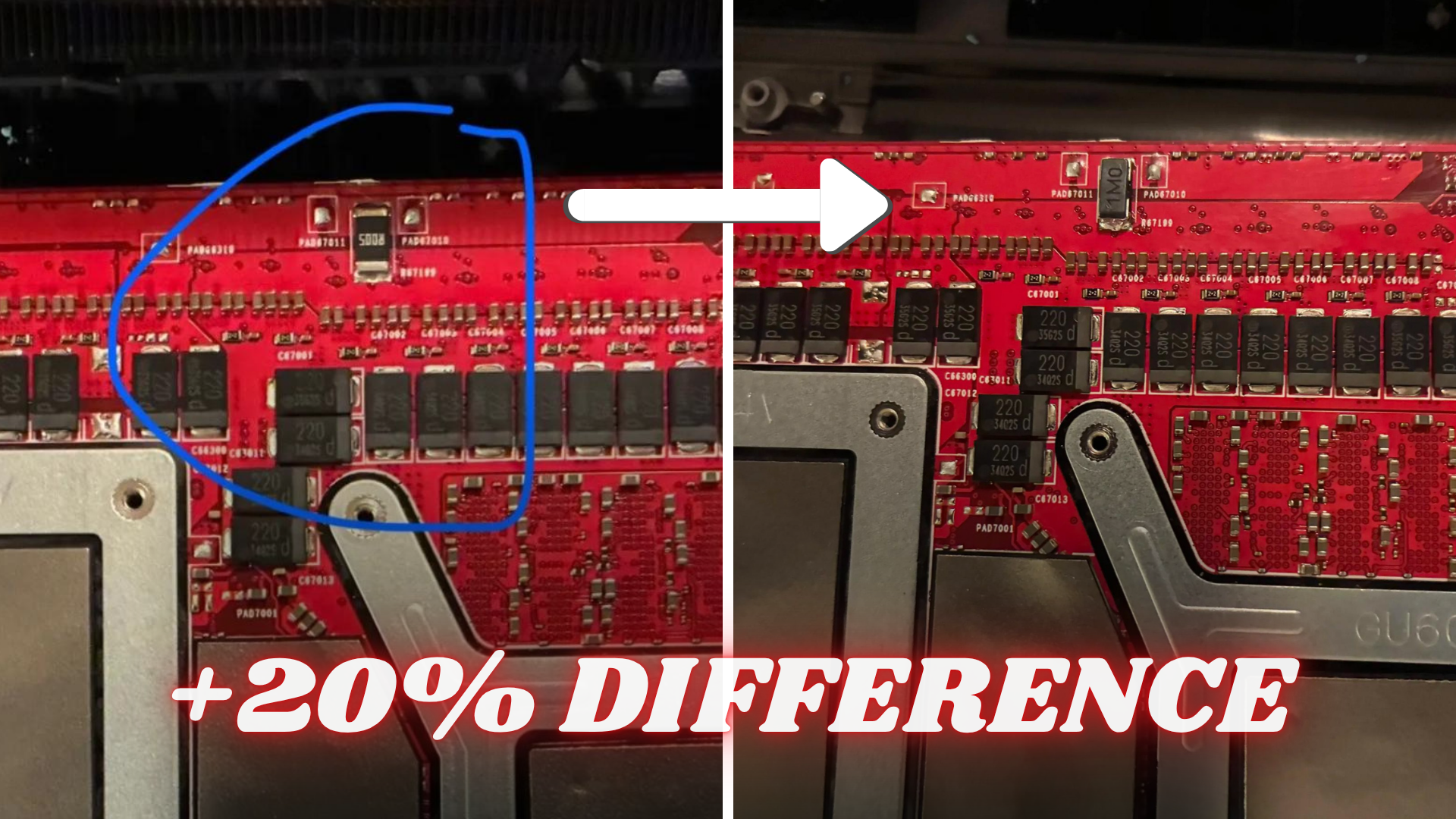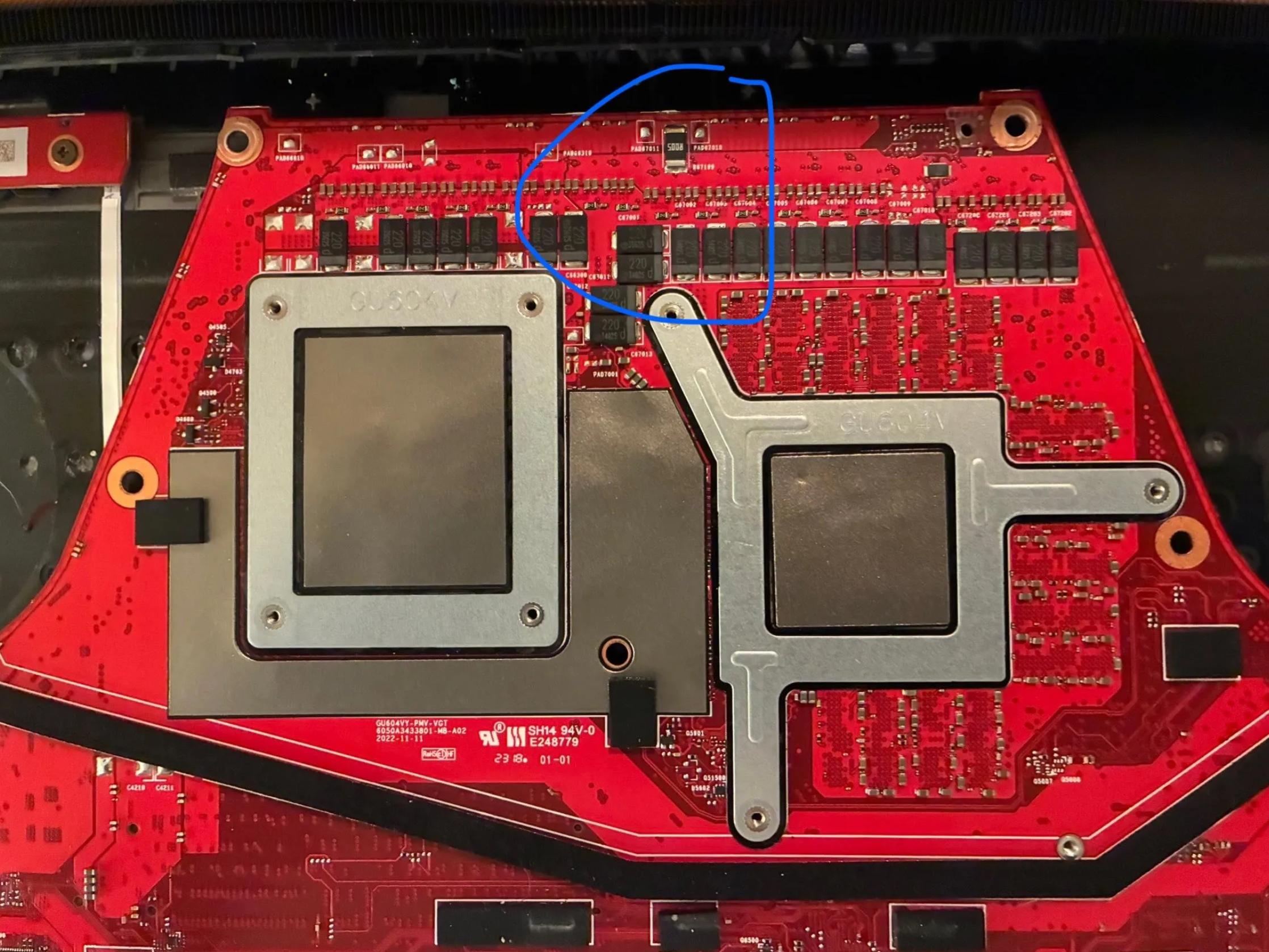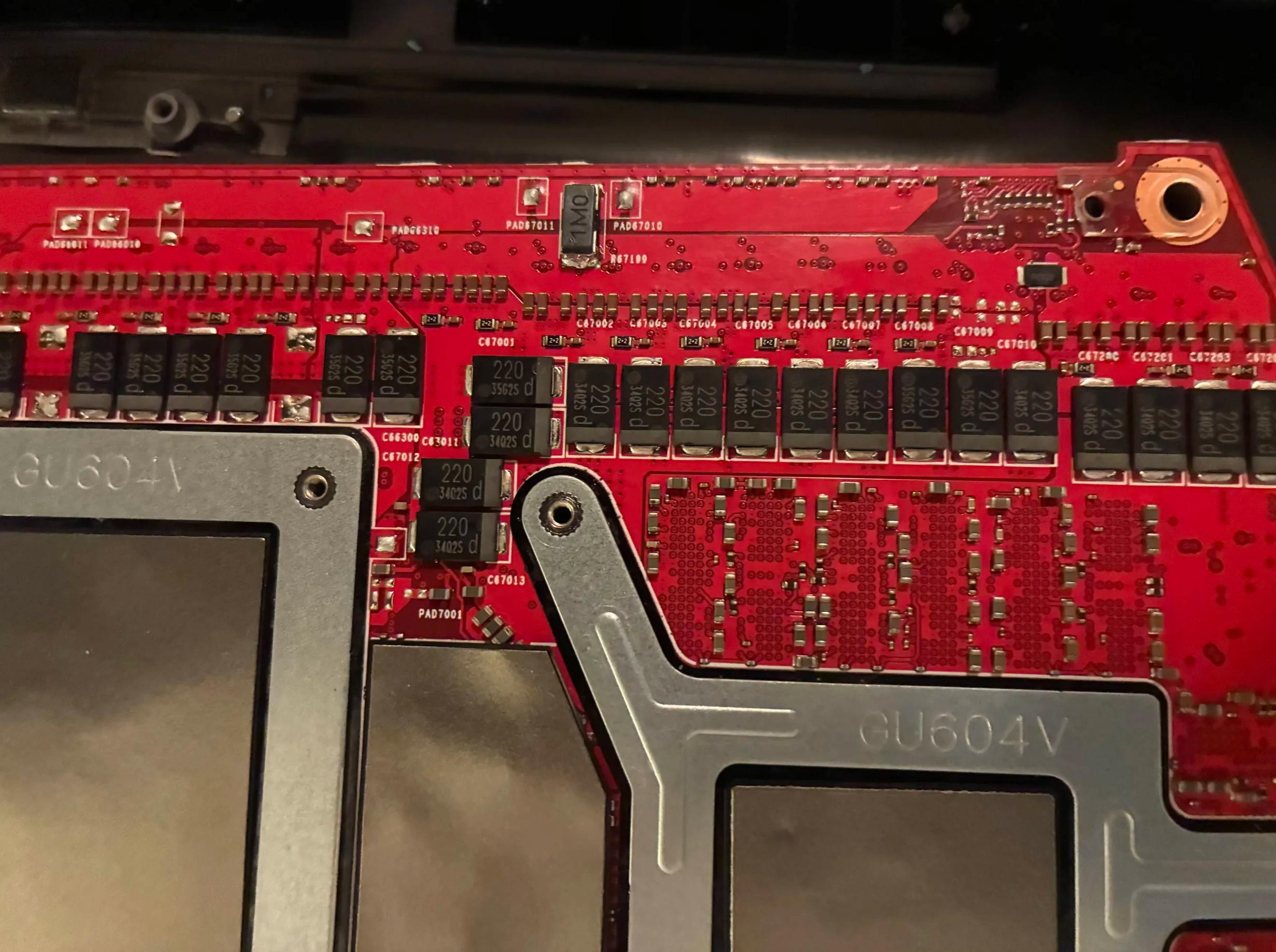RTX 4090 laptop GPU gets 20% performance boost after shunt mod, beats the mobile RTX 5090, on average — reduced resistance boosts power to 240W

Shunt mods on mobile devices are always exciting because they seem to push the boundaries of what's possible in a more practical way. Laptops are thermally constrained and, thus, power-limited compared to their desktop counterparts. Even a fully specced-out mobile GPU can't compete against its desktop variant, so when someone tries to break through the manufactured barriers to unlock its full potential, well, we let the results speak for themselves. And the numbers coming out of this Reddit user's laptop are nothing short of impressive.
Zephyrus M16 4090 Shunt Modded - Thin and Light Laptop Matches 5090 Laptops from r/GamingLaptops
On the r/GamingLaptops subreddit, user u/thatavidreadertrue (we'll call him Avid) details their experience shunt-modding an Asus ROG Zephyrus M16 gaming laptop with an RTX 4090, and they come with the benchmarks to back it all up. For those unaware, shunt-modding essentially refers to tricking your GPU into thinking it's consuming way less power than it actually is. This allows the GPU to boost higher and for longer before thermal-throttling, enabling the silicon to be overclocked through clever electronic surgery rather than brute-forcing the cooling.
In Avid's case, they took a 1 mΩ resistor and placed it in parallel with the GPU’s existing 5 mΩ shunt resistor on the motherboard. Through Ohm's law, that comes out to an 83% reduction in resistance, meaning the GPU is now underreporting its wattage by roughly 6x (down to just 0.83mΩ). The 4090 in the Zephyrus M16 has a 150W TGP, meaning the firmware won't allow it to go past that. But with the shunt mod, the GPU's internal logic is altered, so when it says it's consuming 40-45W, it's actually drawing around 240W in reality.
This allows for a pretty incredible bump in performance, so much so that this 4090 starts to match or even outperform the RTX 5090 mobile in a multitude of scenarios. Avid didn't test any games, but the synthetic benchmarks are enough to give us an idea. The most drastic difference comes in Solar Bay Extreme, where the shunt-modded 4090 scored 24,617 points, which was 35% higher than the "next best M16" which could only manage 18,166. Compared to the average 5090 laptop that can achieve 22,877 points, our 4090 with wings was still 7.6% ahead.
Benchmark | Shunt-modded Zephyrus M16 | Average Zephyrus M16 | Improvement | Average RTX 5090 laptop | Difference vs. 5090 laptop |
|---|---|---|---|---|---|
Speedway | 6911 | 5673 | +21.8% | 6307 | +9.6% |
Steel Nomad | 6137 | 5079 | +20.8% | 6159 | -0.4% |
Steel Nomad Light | 27498 | 22466 | +22.4% | 26137 | +5.2% |
Port Royal | 16323 | 13564 | +20.3% | 16321 | +0.0% |
Time Spy graphics | 25444 | 23402 | +8.7% | 24949 | +2.0% |
Time Spy overall | 23106 | 22031 | +4.9% | 23076 | +0.1% |
Solar Bay Extreme | 24617 | 18166 | +35.5% | 22877 | +7.6% |
Average Gain | Row 7 - Cell 1 | Row 7 - Cell 2 | +19.2% | Row 7 - Cell 4 | +3.5% |
There was essentially no difference in Port Royal, though, and the shunt mod was actually a smidge slower in Steel Nomad, but across all tests, the average gain was still 3.5% compared to a regular 5090 mobile, and almost 20% compared to the other 4090 GPUs in the Zephyrus M16. To deal with the extra heat, all Avid had to do was upgrade the liquid metal to PTM7950 phase-change thermal pads, and swap out the stock VRM thermal pads with Upsiren UX Pro Ultra.
While thermal details were scarce, Avid did mention in a comment that the 4090 gets up to 80-84°C but "doesn't thermal throttle" while the CPU can get a bit toasty at around 90°C. We also learned that Avid undervolts the shunt-modded 4090, limiting the voltage to 800mV for gaming, which makes sense since otherwise the GPU would keep boosting to potentially dangerous levels.
Overall, this config can strike a nice balance between power, performance, temps, and noise. That's before we even factor in the price, because Avid actually got this Zephyrus M16 from the secondhand market for only $1600, which is a good deal in and of itself. But, when you consider that it beats an RTX 5090 laptop after modding for almost no additional charge, it transforms into next-level value.
Get Tom's Hardware's best news and in-depth reviews, straight to your inbox.


As always, a disclaimer is due: Messing with your hardware on this level can cause irreparable harm to your device, especially if you're not sure what you're doing. The machine is designed with a certain thermal and power envelope in mind, so bypassing that can only lead to so much improvement before you hit the point of diminishing returns. However, if there's room, Avid's shunt mod shows us it doesn't take much to raise the ceiling.

Follow Tom's Hardware on Google News, or add us as a preferred source, to get our latest news, analysis, & reviews in your feeds.

Hassam Nasir is a die-hard hardware enthusiast with years of experience as a tech editor and writer, focusing on detailed CPU comparisons and general hardware news. When he’s not working, you’ll find him bending tubes for his ever-evolving custom water-loop gaming rig or benchmarking the latest CPUs and GPUs just for fun.
-
chaz_music Given what has been happening with the GPU paralleled pin power connectors being damaged, I would warn anyone doing this mod to be careful. If you can, use an IR camera on the connectors on the GPU and the PSU side until you are sure it isn't overheating a wire/pin set. Or use a current probe to measure all the feed and return wire currents for balance.Reply
If the above is not available: At least do a "touch test" to see if the connectors and wires are getting too hot or are unevenly heating up. Do it often and repeatedly while stress testing the first half hour or so. The average user isn't going to recognize what 90 deg C feels like (It can cause pain!), but the average person can tell the difference if one wire is getting **much** hotter than the rest. That indicates unbalanced current flow and damage is going to occur.
This is a very subjective technique, but at least this can help catch a true catastrophic failure from happening. -
Giroro " laptop was shunt modded by stacking a 1mOhm resistor on top of the 5mOhm shunt resistor "Reply
Oh cool, so now I'll have to go complain on a reddit post because the actual author of this story used unclear notation for the values of the resistors. -
_D_D What was unclear exactly?Reply
1mOhm = 1 milliohm = 1mΩ = 0.001Ω = 0.001 Ohm
5mOhm = 5 milliohms = 5mΩ = 0.005Ω = 0.005 Ohm -
DocHolidai Reply
Check out my account on 3DMark I have a shunt modded Alienware Area-51 5090 laptop and my scores are way higher in all categories. Here are a few to show:Admin said:A user on Reddit shunt-modded their Zephyrus M16's RTX 4090 laptop GPU, which led to a 20% bump in performance compared to stock, while even beating RTX 5090 mobile on average. This was achieved by just stacking one resistor atop the existing one to trick the GPU into consuming way more power than it thinks it is.
RTX 4090 laptop GPU gets 20% performance boost after shunt mod, beats the mobile RTX 5090, on average — reduced resistance boosts power to 240W : Read more
Port Roral 19,017
https://www.3dmark.com/pr/3671492SpeedWay 7,111
https://www.3dmark.com/sw/2780446Steel Nomad 7,468
https://www.3dmark.com/sn/9139349Time Spy Graphics 29,938
https://www.3dmark.com/spy/59215916 -
JoeGonsales Cool that it beats a 5090, but risking your whole laptop for a few percent seems questionable.Reply